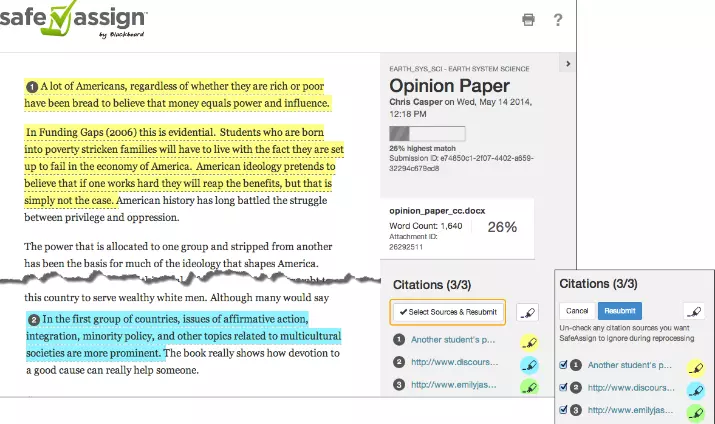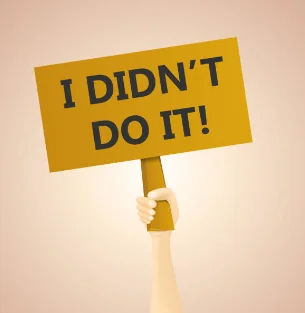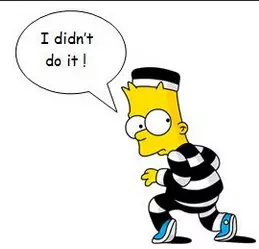In addressing plagiarism, institutions look at the numbers. But, could they always be true? The plagiarism detection systems pinpoint plagiarism cases; could they be working under a misguided belief that they correctly document all instances. Why would a scan say I plagiarized, but I didn’t!
The plagiarism report is usually challenging to navigate, hard to interpret, and sometimes plainly wrong. Teachers should stop assuming that the plagiarism checkers always finds borrowed texts and start reading more carefully.
If a scanner like Turnitin or SafeAssign says that you plagiarized but you did not, this could be a case of a false negative and should not alarm you. All you need to do is explain to the teacher and defend your sources and citations.
If well-referenced, your paper will be accepted by your professor who will determine if there is plagiarism or not.
the worry is normal because plagiarism is a serious moral offense in learning institutions. However, some checking tools are known to give false positive and false negative reports.
Let us explore what happens for each of the scanners used.
Turnitin says I Plagiarized, But I Didn’t

Turnitin has experience in plagiarism detection. The company is constantly updating its algorithms to be always ahead of the student.
For this reason, it can give judgment on certain cases.
Turnitin gives a similarity score, and each needs to be analyzed further by your teacher to establish if there is a problem.
Caption this; you had worked hard on your assignment. Besides, you made sure you used the proper citation and correct referencing. However, submitting your work on Turnitin gives a percentage of plagiarism.
To add to your challenges, you are summoned by your teacher to explain why your paper is plagiarized. What could have gone wrong, and how can you prove you didn’t plagiarize; you submitted original work.
To start with, there are numerous configurations your teacher can use when setting up the submission folder. In like manner, such options could contribute to your paper getting a higher percent match to another source.
For instance, your teacher decides whether to include works cited information and quotes. Such quotes contribute to the scan matches. In our guide to reading SafeAssign scores, we explained more about how to interpret such matches.
Second, you might have forgotten to put a quotation mark somewhere in your work; or your paraphrased text is similar to the original text.
Another reason could be you didn’t know you plagiarized your work. You might have gotten your material from a source that looks too common that you thought was common information.
Safeassign says I Plagiarized, but I Didn’t
Again, you did your work right. You did everything from scratch, yet it came out as extensively plagiarized content when you scanned your work. Why would Safeassign scan say I plagiarized, but I didn’t? Where would this challenge arise from?

What is the Safeassign score of your paper? If it’s below 15 percent, that is not alarming. But if it’s more than that, you need to recheck your work.
To start with, you should strive to revise your assignment. Delete the matching text and paraphrase your work.
Since Safeassign gives you a chance for multiple submissions, fix and resubmit.
One of the Safeassign advantages is you cannot be given a match to your previously submitted content, as long as what you are resubmitting is a continuation.
Always strive to take time to do your research. Do not procrastinate with your research and assignments. When you procrastinate, you will see yourself running out of time and pressured to do sloppy research in the last minutes.
In addition, make it your character to do your work and be thorough in citing your sources and taking your notes when writing your drafts.
Lastly, familiarize yourself with the appropriate paraphrasing so that your work won’t rewrite the original content. Learn how to incorporate your ideas, having understood the original writings.
What to Do when Scan shows Plagiarism but you Didn’t
In case you forgot to do the above before submitting your work, all is not lost. To salvage yourself when caught with plagiarism, try the following:
1. Meet your Teacher for Oral Defense
It can be possible that your teacher does not know how to use Turnitin. There could be the probability that, when setting the submission folder, your teacher checked options like “include quotes” or “scan citation.”

These will result in a paper having a higher match percentage. Request you go over your submission together and have him show you how they decided you plagiarized.
2. Do not Refuse the Plagiarism Accusation
After receiving plagiarism reports, the first thought would be that you write your teacher an email. However, an email could be used against you.
Person to person meeting is ideal because it allows for discussions.
On the same note, do not hurry to request all these. Wait and see if they will drop the plagiarism accusations. Comparatively, they can agree with you.
Or charge you with academic dishonesty where you are subjected to either suspension or expulsion.
3. Do not Talk with Friends about it
You will be disappointed that your teachers didn’t believe you even after having a person-to-person meeting with them.
Do not talk to any of your friends or write to someone regarding this issue as you continue to wait. This could leave a trail or be a bait that your teacher will use against you.
How to Avoid Plagiarism when writing
Plagiarism can be both deliberate and unintentional. Notably, you build upon the works of others and extensively use numerous existing sources when you write an academic paper. To avoid cases of plagiarism in your work, incorporate the sources correctly into your text.
Read the tips of how to copy-paste well
The following steps are essential to ensure your work is plagiarism-free:

- Remember to keep track of all the sources you will consult to write your assignment. Organize your sources before writing
- Remember to paraphrase and quote accordingly, adding your ideas and interpretations.
- Cite your sources correctly and ensure your citation corresponds with your reference in the reference list or bibliography at the end of your paper.
- Check your work before submitting it. Fortunately, by checking, you will avoid mistakes such as forgotten or misplaced citations, forgotten sources in your reference list, quotation marks, and paraphrased text that closely resembles the original text.
How to Prove that you Didn’t Copy
1. Show your References
Bearing in mind the consequences of plagiarism in your institution, try as much as possible to prove your innocence.
Also, show your teacher the sources of your information. It could be a challenge to give attributions the correct way and not cheat.
Besides, you can give your teacher the notes, drafts, or outlines you made for this specific assignment.
2. Explain your Citations
Go on to show your teacher how you cited your work. Please do not see it as lots of work, rather an opportunity to fight for your future and career advancements.
3. Explain it as Unintentional Plagiarism

You might have plagiarized unintentionally. You failed to follow what your school dictates as the right procedure for citation, although you never meant to cheat.
For example, you failed to cite a source that is not common knowledge, or you failed to quote a writer’s exact words even if it is documented.
In addition, you might have failed to give a summary in your word even though cited.
Another possibility would be that you failed to paraphrase your work even though you have cited it.
4. Explain your Points in defense
When given a chance to discuss your paper, defend it thoroughly. If a scan says you plagiarized, but you didn’t, prove to your teacher by making sure you have strongly familiarized yourself with the contents of your writing.
By talking confidently, you will send a message to your teacher that you truly know what you have written about. This will help prove your point that you didn’t plagiarize your assignment.
5. Present other Evidence
This could be evidence that depicts your skills and knowledge. For example, you can show them your previous assignments to prove that you didn’t plagiarize in the past.

